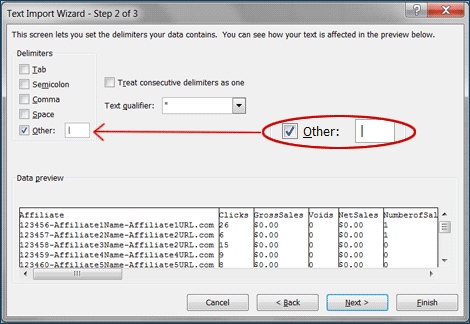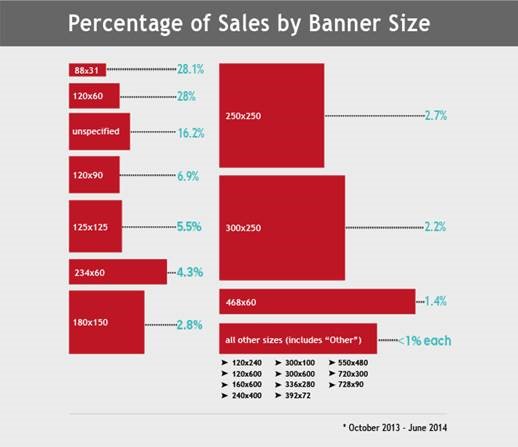As a merchant you have decided to start an affiliate program, but you are not sure where to begin. This is common problem because there are so many components needed to launch a successful affiliate program and your knowledge of affiliate marketing may not be there. Where do you begin? There are 10 major elements that need to be completed in order to launch an affiliate program.
1. Competitive Intelligence
This is the most important piece in getting the program off the ground. Compiling data about your competition will guide you on many of the other necessary pieces to launching an affiliate program. What you want to do here is find competitors (or merchants as closely related to your niche) and see what network they are running on (ShareASale, CJ Affiliate By Conversant, LinkShare, In-House platforms), what commission structure they have in place, what is their cookie duration, and their current EPC statistics. Once all the data is gathered it will guide you in deciding how to structure your program.
2. Choosing a Network
You do not want to choose a network strictly based on cost, but rather where your direct competition is and where affiliates are that will be willing to promote your product/service. For example, if most of your competition is on ShareASale and they are having success, then ShareASale should be strongly considered as the network to launch your program on because they have the affiliates that would be a perfect fit to your program.
3. Commission Structure
This is a tough step for many merchants, but if you performed an in-depth competitive analysis the decision should be less stressful. Being competitive in terms of payouts is a must, but deciding how to structure them is another story. Do you want to offer a flat fee (i.e. $25 per sale), a percentage of the sale (i.e. 10%), or offer a tiered structure based on performance (i.e. if sales exceed $2,000 per month then commission paid will be 12%, up from 10% default)?
4. Cookie Duration
This will also be determined by the competitive data gathered earlier in the process. Affiliate transactions generally occur within the first week of the cookie being dropped. After 30 days a majority of users delete their cookies. 30, 60, 90, and 120 are commonly used cookie durations, but it is up to you and how you think it will impact conversions for your program.
5. Program Bio
This is what the affiliates see when they are searching for merchants to promote within the network interface. You want to include as much pertinent information as possible to make the decision easier for prospective affiliates to choose your program. Items to include are:
a. Brief description of your company
b. Affiliate program details that include: commission structure, cookie like, opportunities to earn more money, and other major selling points.
6. Email Templates
These are what are sent to affiliates upon applying to your program, being accepted into the program, or being declined.
a. The apply email template – this email should include verbiage stating we received your application and are reviewing it and will notify you within 24 hours of our decision as well as contact information.
b. The decline email template – this email should include reasons for possibly being declined and also provide them the opportunity to appeal the decision by contacting you or the affiliate manager directly.
c. The acceptance email – this email should provide a description of your company, on overview of the paid search policy, the program details (commission, cookie life, etc.) and 3 – 5 creatives to get them started with.
7. Terms of Service
This is critical to any affiliate program. It outlines the rules and regulations of the affiliate program. It goes over expected behavior and consequences if not followed. If affiliates violate the TOS at any time you should communicate with them what part of the TOS was violated and expectations moving forward. Any changes made to this document after the fact must be communicated to the affiliates immediately.
8. Banners/Text Links
Affiliate use them to promote your products/services. When creating banners for your affiliate program there are a few requirements that must be met in order for them to be quality banners. Check out this article by Geno Prussakov on banner requirements. Text links on the other hand need to be catchy and be relevant to what you are selling. Providing your deals in the form of text links is a great idea because affiliates can insert them into their own content and they can also be deep linkable.
9. Coupons
Offering coupons is great way to increase conversions through your affiliate program. Starting out with 2 – 3 coupons will give your affiliates another way to market your products. For example, offering a free shipping coupon or a % off to start can get the affiliates excited.
10. Policing Tools
Compliance may become an issue in your affiliate, but the question is how do you monitor what your affiliates are doing? There are tools out there that monitor various aspects of your brand and they include:
a. Paid Search Monitoring – you can find out if any affiliates are bidding on your trademarks through Google, Bing, Yahoo, or AOL ads.
b. Content Monitoring – you can find webpages that match your current offers being produced by affiliates.
c. Domain Monitoring – you can find out if affiliates are purchasing domains with your trademarks in it as well as misspelled variations.
d. Social Media Monitoring – you can see if affiliates are promoting your brand through social media in accordance with your terms of service.
e. Coupon Code Monitoring – this is used when you do not want affiliates to promote certain coupon codes. This can also be used to determine if affiliates are harvesting coupons from your site or email newsletters.
Launching an affiliate program does not have to be a daunting task. Ensuring it is optimized is the first step on the road to success. Being competitive and providing affiliates what they need to be successful is the name of the game, but ongoing management will be ultimately determine success or failure.




